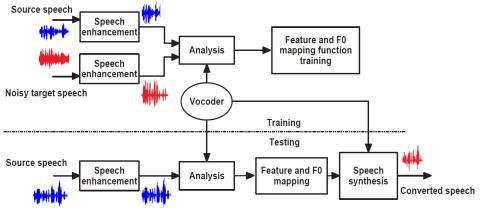Most of the existing studies on voice conversion (VC) are conducted in acoustically matched conditions between source and target signal. However, the robustness of VC methods in presence of mismatch remains unknown. In this paper, we report a comparative analysis of different VC techniques under mismatched conditions. The extensive experiments with five different VC techniques on CMU ARCTIC corpus suggest that performance of VC methods substantially degrades in noisy conditions. We have found that bilinear frequency warping with amplitude scaling (BLFWAS) outperforms other methods in most of the noisy conditions. We further explore the suitability of different speech enhancement techniques for robust conversion. The objective evaluation results indicate that spectral subtraction and log minimum mean square error (logMMSE) based speech enhancement techniques can be used to improve the performance in specific noisy conditions.
Conclusion
This study presents a detailed analysis of the robustness of existing VC methods against mismatched condition with noisy target data. It reveals that in most of the cases, BLFWAS provides superior performance than other VC methods. However, in white noise, MFA outperforms others. We also explored the effectiveness of speech enhancement methods on all the speech samples in clean as well as noisy cases. We have observed that spectral subtraction improves performance in case of white noise while iterativeWiener filtering degrades the performance. Furthermore, log MMSE provides no performance gain in MCD value. However, it gives better PESQ in white noise. As a whole, spectral subtraction works well for BLFWAS and MFA, while iterative Wiener filtering and logMMSE for JDGMM. As future work, we plan to extend this analysis for recently developedDNN-based voice conversion techniques. The results from this work could be useful for the development of robust voice conversion algorithm for real-world application.

